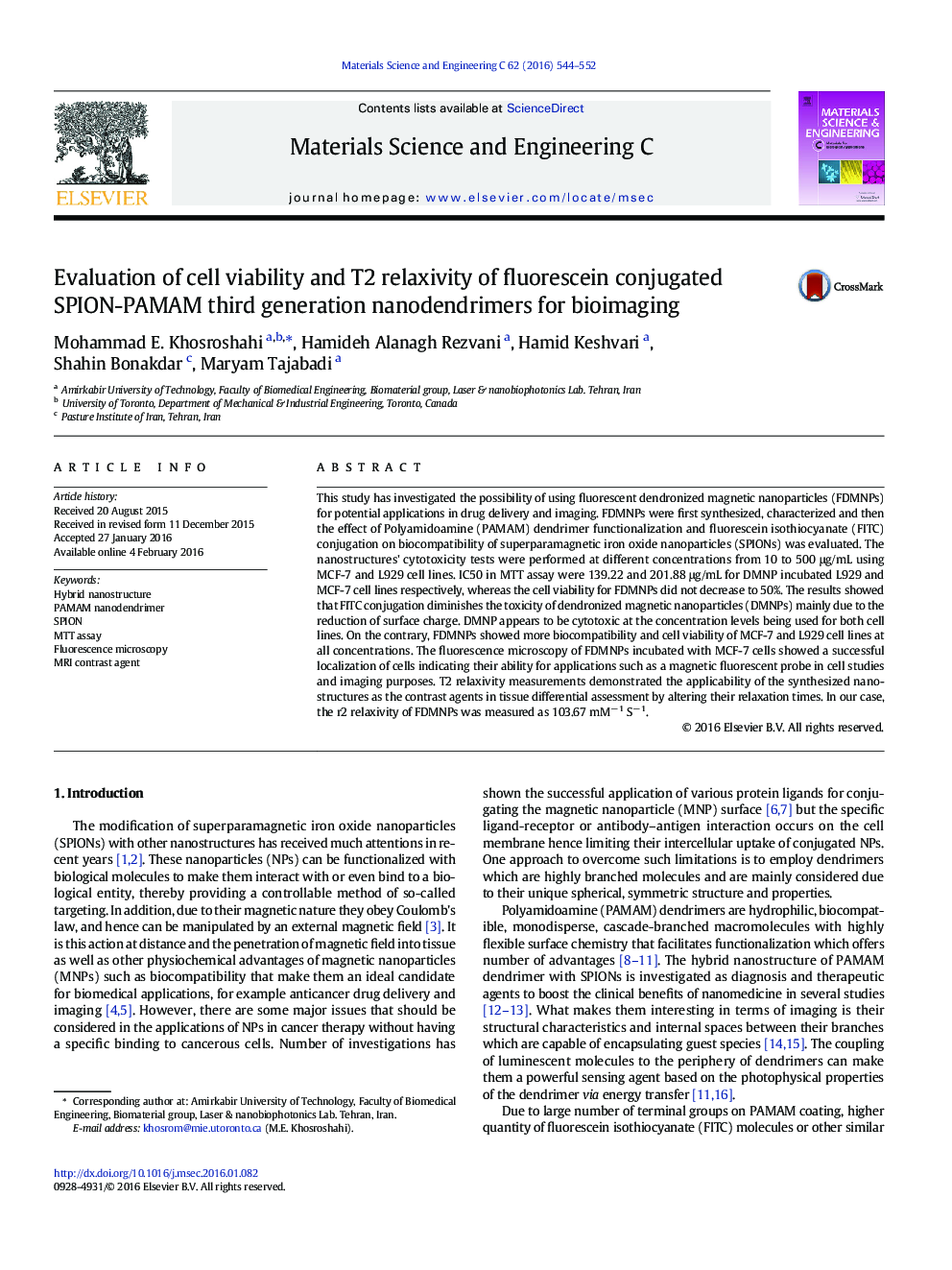| Article ID | Journal | Published Year | Pages | File Type |
|---|---|---|---|---|
| 7867951 | Materials Science and Engineering: C | 2016 | 9 Pages |
Abstract
This study has investigated the possibility of using fluorescent dendronized magnetic nanoparticles (FDMNPs) for potential applications in drug delivery and imaging. FDMNPs were first synthesized, characterized and then the effect of Polyamidoamine (PAMAM) dendrimer functionalization and fluorescein isothiocyanate (FITC) conjugation on biocompatibility of superparamagnetic iron oxide nanoparticles (SPIONs) was evaluated. The nanostructures' cytotoxicity tests were performed at different concentrations from 10 to 500 μg/mL using MCF-7 and L929 cell lines. IC50 in MTT assay were 139.22 and 201.88 μg/mL for DMNP incubated L929 and MCF-7 cell lines respectively, whereas the cell viability for FDMNPs did not decrease to 50%. The results showed that FITC conjugation diminishes the toxicity of dendronized magnetic nanoparticles (DMNPs) mainly due to the reduction of surface charge. DMNP appears to be cytotoxic at the concentration levels being used for both cell lines. On the contrary, FDMNPs showed more biocompatibility and cell viability of MCF-7 and L929 cell lines at all concentrations. The fluorescence microscopy of FDMNPs incubated with MCF-7 cells showed a successful localization of cells indicating their ability for applications such as a magnetic fluorescent probe in cell studies and imaging purposes. T2 relaxivity measurements demonstrated the applicability of the synthesized nanostructures as the contrast agents in tissue differential assessment by altering their relaxation times. In our case, the r2 relaxivity of FDMNPs was measured as 103.67 mMâ 1 Sâ 1.
Related Topics
Physical Sciences and Engineering
Materials Science
Biomaterials
Authors
Mohammad E. Khosroshahi, Hamideh Alanagh Rezvani, Hamid Keshvari, Shahin Bonakdar, Maryam Tajabadi,
